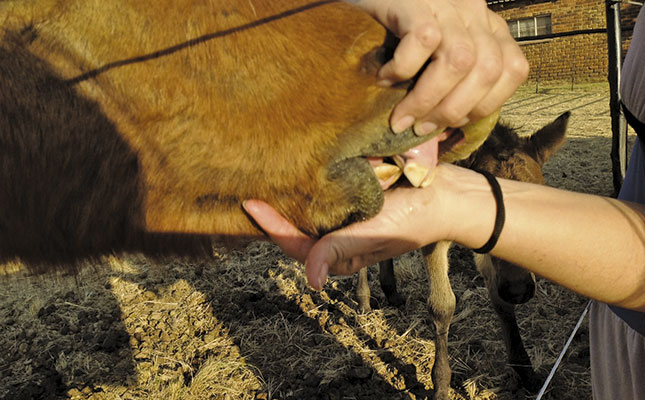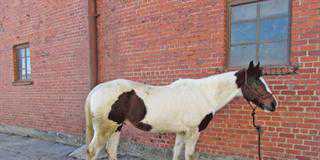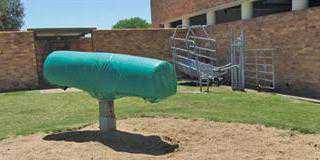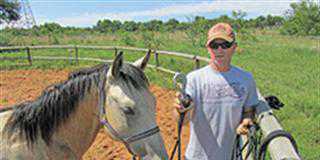
When a horse’s top incisor teeth protrude over the incisor teeth on its lower jaw, the condition is called parrot mouth, buck teeth or undershot jaw. The proper veterinary term is brachygnathism. There are different degrees of severity, ranging from a lack of alignment to a lower jaw that is up to 10cm shorter than the upper jaw.
Parrot mouth occurs in 2% to 5% of foals, mostly in colts, and is found chiefly in thoroughbreds and quarter horses. It is unsightly, but may improve as the horse matures. Parrot mouth is caused when the upper and lower jaw do not grow at the same rate. It has been suggested that the most common reason is mating a mare and stallion that have jaws of markedly different shapes. Other causes may include malnutrition, mineral imbalances or a young, growing foal that has suffered a severe disease.
A parrot mouth is thus seen as a congenital rather than a genetic disease. However, some breeders consider it to be a
recessive hereditary condition, and breed societies such as the American Quarter Horse Association prefer not to show or breed with affected stud animals.
Don’t forget the hay
It has also been noted that several well-known race horses had parrot mouths and hence the condition makes no difference to the way the bit lies in a horse’s mouth. Often, foals are not born with the defect and it appears only when they are between one and six months old. Surprisingly, even fairly severe cases are able to suckle milk from their mothers and pick up, chew and swallow hay and concentrates.
They do, however, have difficulty grazing in the pasture as they cannot bite off the grass. So it is important to make sure they are fed hay at all times. The condition does not seem to prevent the horse from drinking water.
Treatment options
Surgery is an option. This involves general anaesthesia and wiring the foal’s upper jaw to prevent further growth until the lower jaw catches up. A prosthetic plate is also wired or moulded onto the bottom jaw so that the bite is evened out. This procedure is very expensive, however, and the foal may need to undergo surgery more than once while growing up. The wire inserted to prevent the top jaw growing also tends to wear through the gums, causing infections.
Calcium and phosphate
Some foals survive without surgery and the underbite improves as they grow up. If surgery is not undertaken, the least that should be done is radical supplementation with a mineral mix containing calcium and phosphate. It is also essential for an equine dentist to visit regularly and balance the teeth. Horses’ teeth keep on growing as they mature and if a tooth does not have an opposing tooth to wear it down, it will continue growing. The teeth in the bottom jaw will eventually poke into the roof of the mouth, causing ulcers. The teeth on both sides, at the back of the mouth, may also not line up, making chewing or closing the mouth difficult.
Maintaining a horse with this condition becomes very expensive. Owners should consider euthanasia if the horse reaches 18 months of age, still has a severe parrot mouth, and ongoing care for the rest of the horse’s life is unaffordable.













